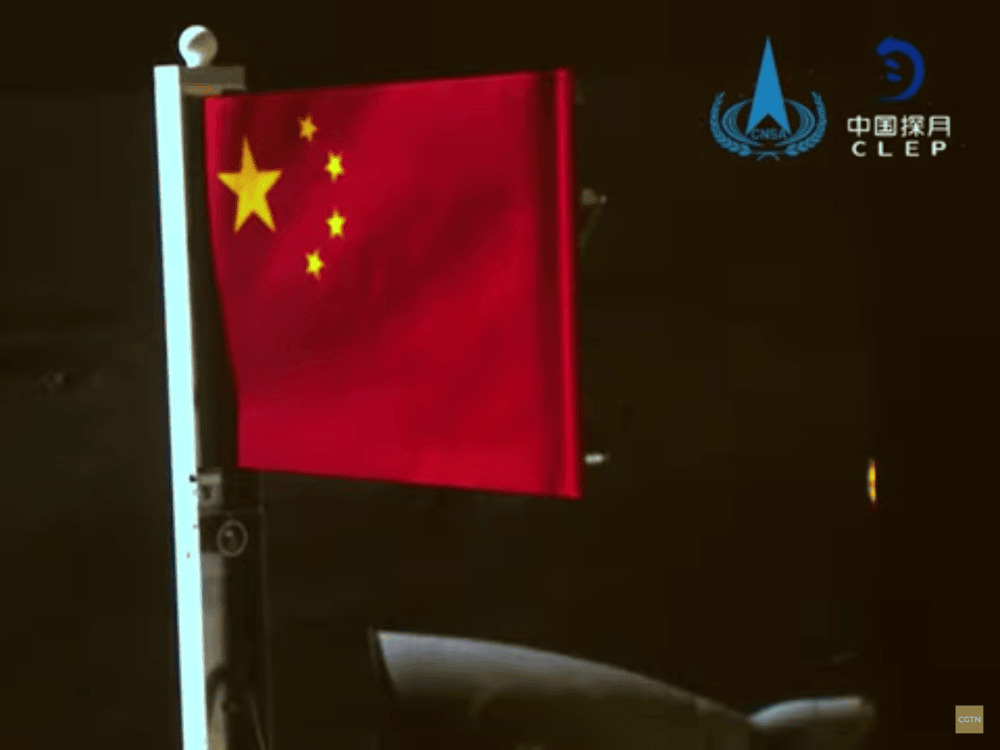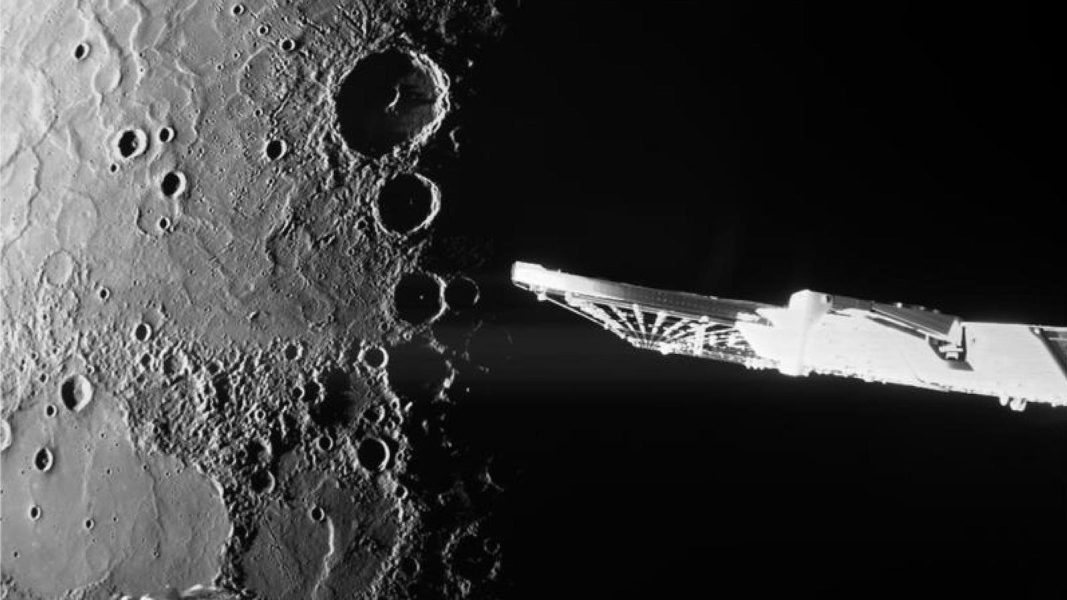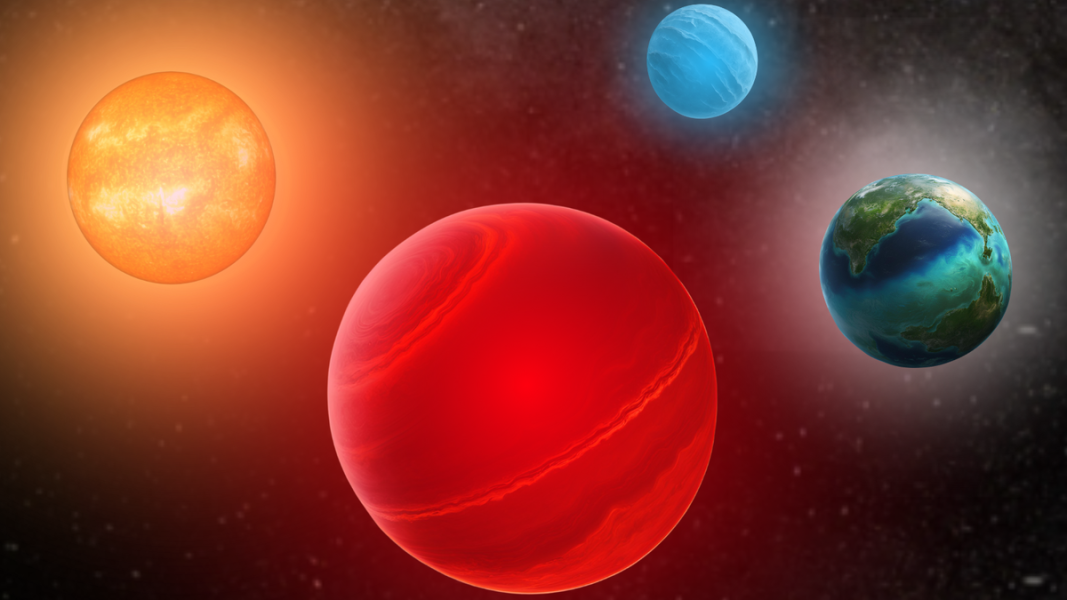China plans to wave its flag on the surface of the moon — literally – National Post

Chang’e 7 mission, slated to reach the moon’s south pole next year, will include a flag that can flutter even in the vacuum of spaceYou can save this article by registering for free here. Or sign-in if you have an account.When American astronauts landed on the moon in 1969, one of their first tasks — after grabbing a handful of moon rocks in case they needed to make a sudden departure — was to raise “Old Glory” above the lunar plain.It wasn’t a standard American flagpole, which would have let the fabric droop and sag in the airless, breezeless vacuum of space. So the design included not just an upright pole but a perpendicular extension like a shower curtain rod, so the flag could hang fully unfurled, all its stars and stripes showing.Enjoy the latest local, national and international news.Enjoy the latest local, national and international news.Create an account or sign in to continue with your reading experience.Create an account or sign in to continue with your reading experience.Don’t have an account? Create AccountNow China, which has plans to put its own astronauts on the moon in the near future, is planning to one-up its American counterparts with a flag that will actually flutter and wave.“We know that the moon is vacuum with no air, so it is difficult to make a flag flutter by wind like on Earth,” said Zhang Tianzhu, deputy head of the institute of future technology at the Deep Space Exploration Laboratory, as reported by Space.com. The lab was co-established by the China National Space Administration and the University of Science and Technology of China.The solution, Zhang said, is to arrange wires on the surface of the flag with access to two-way positive and negative current. This will “make the flag flutter through the interaction of electromagnetic fields,” he explained.Zhang added: “This initiative is intended to enhance young students’ understanding of China’s space program and inspire their interest in pursuing space exploration in the future.”The flag will fly aboard the Chang’e 7 mission, which is expected to head to the moon’s south pole next year in search of water ice and other resources in that region. In addition to a lander, a rover and the flag, the mission will include a suite of scientific instruments.Get a dash of perspective along with the trending news of the day in a very readable format.By signing up you consent to receive the above newsletter from Postmedia Network Inc.A welcome email is on its way. If you don’t see it, please check your junk folder.The next issue of NP Posted will soon be in your inbox.We encountered an issue signing you up. Please try againChang’e 7 (the name refers to the Chinese moon goddess) builds upon an ambitious line of lunar milestones that began in 2007. Chang’e 1 and 2 reached orbit around the moon, while 3 and 4 landed and deployed robotic rovers. Missions 5 and 6 returned lunar material to Earth from the near and far side of the moon, and marked the first return of material from the far side of Earth’s natural satellite.“The rover of the Chang’e 7 is slightly larger than that of the Chang’e 4 in scale,” Chang’e 7 Deputy Chief Designer Tang Yuhua of the Lunar Exploration and Space Engineering Centre of China told state television. “It is designed to carry different instruments, and is of roughly the same structure.”Chang’e 8, expected to launch in 2028, is expected to carry a 3D-printing experiment to test-build a lunar structure. It’s all in aid of the nation’s push to land astronauts on the moon, perhaps as early as 2030.“Our goal is to establish a sustainable and scalable comprehensive scientific experimental facility on the lunar surface and in lunar orbit, capable of long-term autonomous operation and short-term human participation, and to basically build an International Lunar Research Station by around 2035,” said Zhang.Of course, every nation’s lunar landers, like the Soviet missions of the 1960s and 1970s, carried some sort of flag or identification. China’s Chang’e 6 mission even carried a flag made of basalt, a type of rock common on the moon, as a way to demonstrate how lunar materials could be used in creating objects locally. (The flag was, however, built and flown from Earth.)Currently, pride of place still goes to America’s space program, which returned striking images of several astronauts saluting the stars and stripes on the lunar surface. And while it’s true that NASA currently has plans to land additional astronauts on the moon as early as 2026, previous slippages in its timeline suggest that may not happen.As to the U.S. flags already there, the one from the first landing, Apollo 11, fell over as the ship blasted off from the lunar surface to begin its journey home. Others were placed farther from the landing sites and have been shown to still be standing in photos taken from orbit, although they may have faded in the harsh environment. China’s waving flag, if it succeeds, could represent a new milestone in the annals of lunar vexillogy (moon flags), at least for now.Postmedia is committed to maintaining a lively but civil forum for discussion. Please keep comments relevant and respectful. Comments may take up to an hour to appear on the site. You will receive an email if there is a reply to your comment, an update to a thread you follow or if a user you follow comments. Visit our Community Guidelines for more information.Delicious ideas that will ignite his sensesTake advantage of these Amazon Canada deals before they’re goneThere’s a big buzzword in health these days: Inflammaging. Here’s what you should know about it.The dreamy escape is perfect for couples looking to splurge, with modern suites and top-notch restaurantsSephora, Frank And Oak and Monos, to name a few365 Bloor Street East, Toronto, Ontario, M4W 3L4© 2025 National Post, a division of Postmedia Network Inc. All rights reserved. Unauthorized distribution, transmission or republication strictly prohibited.This website uses cookies to personalize your content (including ads), and allows us to analyze our traffic. Read more about cookies here. By continuing to use our site, you agree to our Terms of Use and Privacy Policy.You can manage saved articles in your account.and save up to 100 articles!You can manage your saved articles in your account and clicking the X located at the bottom right of the article.






